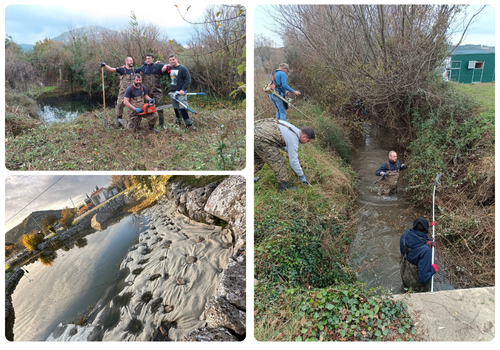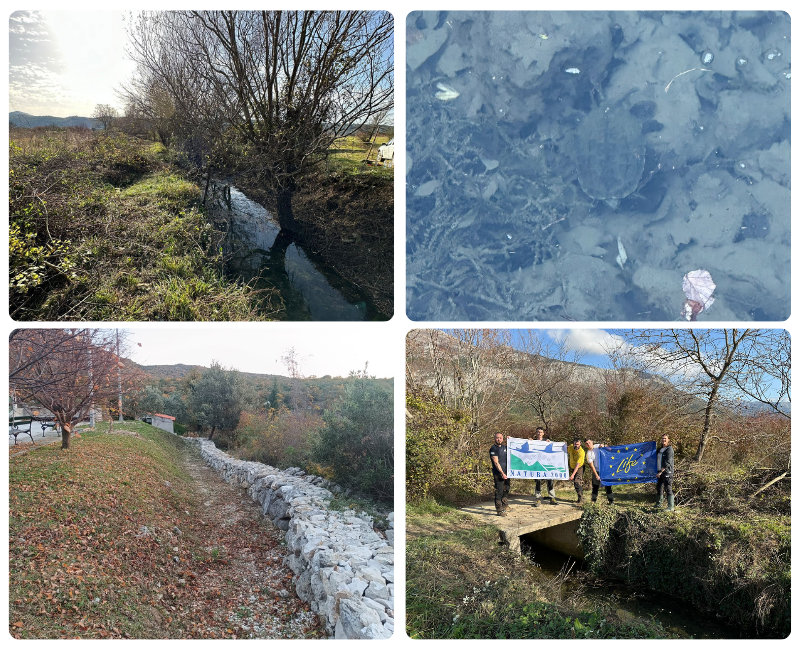Cleaning action to improve conditions on Balkan Terrapin’s habitats
From November 25 to 27, 2024, we organized a cleaning action to improve conditions on Balkan Terrapin’s habitats. The autumn period is ideal for such activities because most aquatic animals are dormant, and we avoid the breeding and egg-laying seasons to minimize disturbance. Cooler temperatures and lower water levels also make the work easier for our dedicated volunteers.
 In Konavosko Polje, the team from the Zagreb Zoo was welcomed by Petra Sisan from the Public Institution for the Management of Protected Natural Areas of the Dubrovnik-Neretva County and Mr. Miho Kukuljica, an active participant in numerous project activities in this area since 2013. Together, they rolled up their sleeves and worked to clean and improve critical habitats for the Balkan Terrapin.
In Konavosko Polje, the team from the Zagreb Zoo was welcomed by Petra Sisan from the Public Institution for the Management of Protected Natural Areas of the Dubrovnik-Neretva County and Mr. Miho Kukuljica, an active participant in numerous project activities in this area since 2013. Together, they rolled up their sleeves and worked to clean and improve critical habitats for the Balkan Terrapin.
In the special herpetological reserve in Majkovi, we focused on removing invasive aquatic vegetation that threatens this valuable terrapin habitat. We used the shading method, partially covering the vegetation with a harmless wool felt provided by the company Woona, ensuring a natural and effective way of controlling invasive plants. Additionally, we cleaned a corridor for the safe crossing of terrapins between two ponds separated by a road, making spring migrations to nesting grounds easier for the turtles.
While cleaning the canals, we employed methods that preserve biodiversity and minimize soil damage. Although more challenging, manual cleaning helps maintain natural, gently sloping banks that are not completely bare or prone to erosion, unlike cleaning with excavators, which often results in steep, barren banks unsuitable for the Balkan Terrapin and other aquatic species. This approach ensures that the canals retain their function of draining excess water and delivering it to pools and fields, while also serving as safe corridors for the migration and survival of animals dependent on these water bodies.
A special reward for our efforts came quickly – a Balkan Terrapin appeared in a cleaned canal, as if it immediately recognized that new pathways had been opened for safe movement. Moments like these remind us of the importance of such actions and inspire us to continue preserving natural habitats and their inhabitants.

